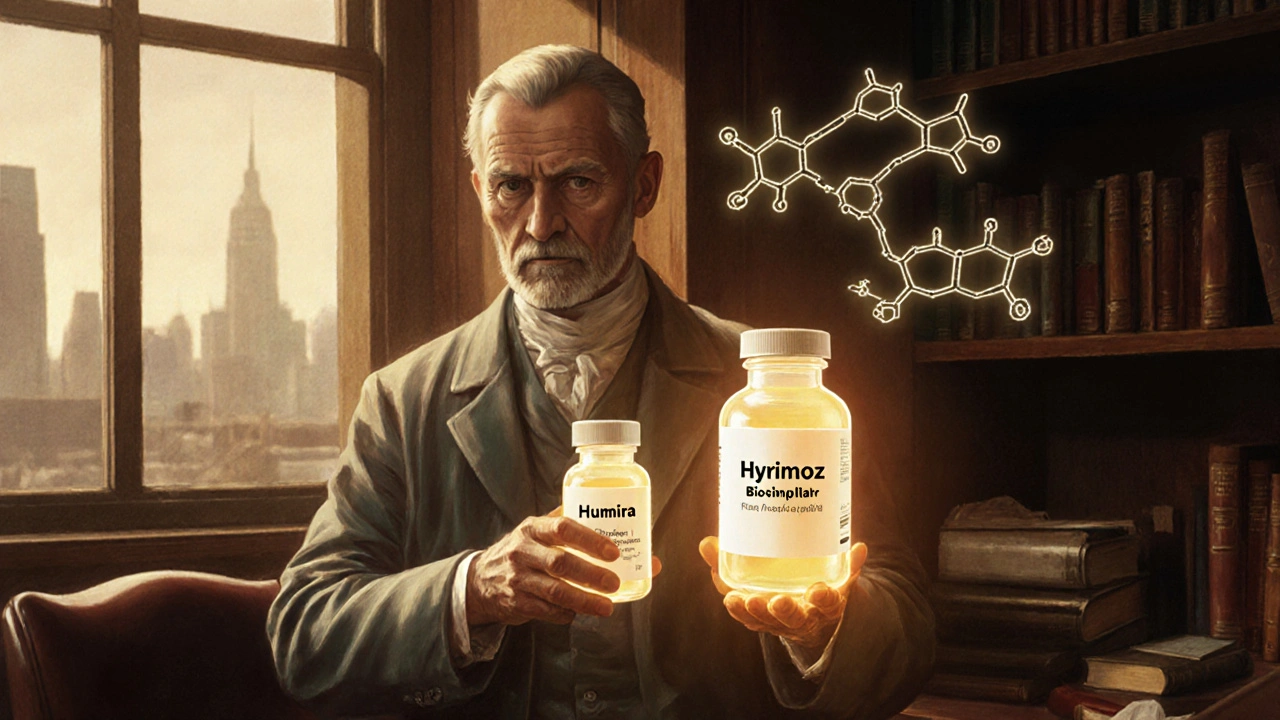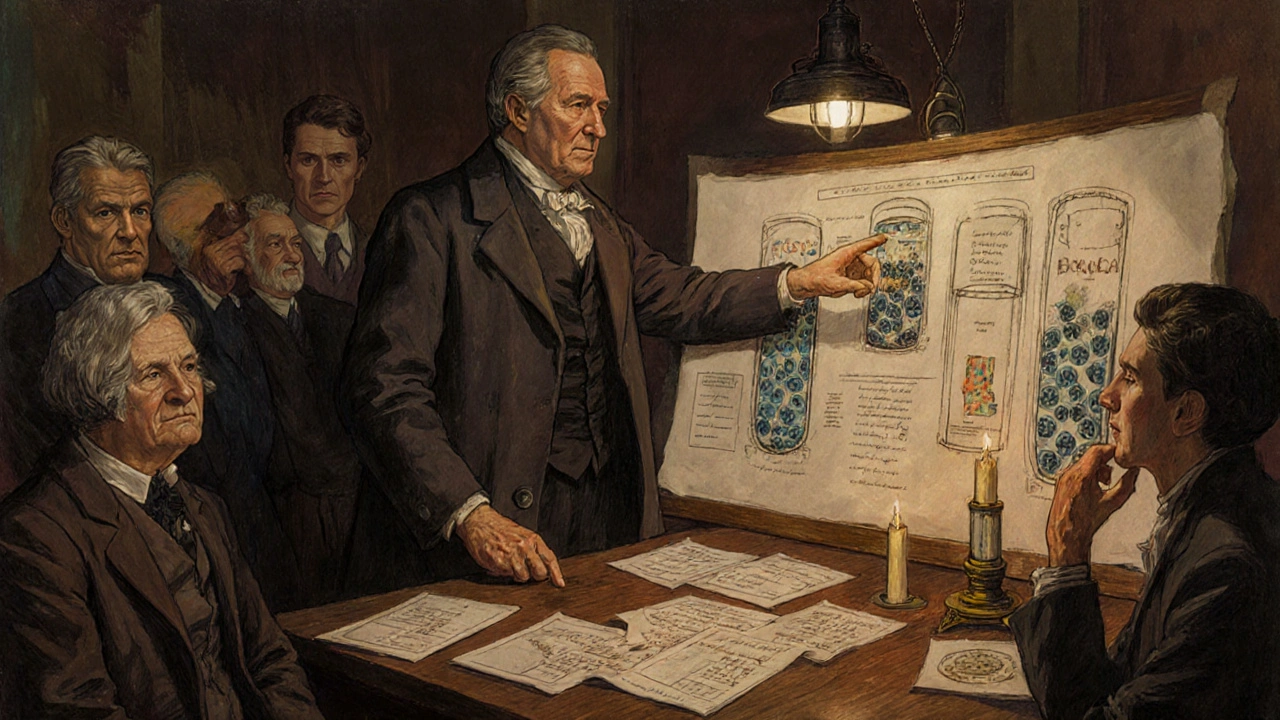How to Understand Biosimilars and Their Cost Implications
 Nov, 16 2025
Nov, 16 2025
When you hear the word biosimilars, it might sound like just another fancy term in a long list of drug names. But if you or someone you know is taking a biologic for arthritis, cancer, or Crohn’s disease, understanding biosimilars could mean saving thousands of dollars each year - without sacrificing effectiveness.
What Exactly Are Biosimilars?
Biosimilars are not generics. That’s the first thing to clear up. Generic pills, like the ones for high blood pressure or cholesterol, are exact chemical copies of brand-name drugs. Biosimilars? They’re highly similar versions of complex biologic medicines - drugs made from living cells, not chemicals. Think insulin, Humira, or Enbrel. These drugs come from yeast, bacteria, or animal cells. Because they’re made by living systems, no two batches are ever 100% identical - even the original brand-name version changes slightly from one production run to the next.
The U.S. Food and Drug Administration (FDA) defines a biosimilar as a product that has no clinically meaningful differences from its reference biologic in safety, purity, and potency. That means if your doctor prescribed Humira for your rheumatoid arthritis, a biosimilar version like Hyrimoz or Amjevita will work just as well. The FDA requires more than 100 different tests to prove this - from molecular structure to how the drug behaves in your body.
Why Do Biosimilars Cost Less?
Biologics are among the most expensive drugs on the market. Humira, for example, cost over $7,000 a month before biosimilars arrived. That’s $84,000 a year. Biosimilars don’t need to repeat every single clinical trial because they’re built on the same science as the original. The FDA allows manufacturers to use data from the reference product, cutting development time and cost.
But here’s the catch: biosimilars don’t slash prices like generics do. While generics can be 80% cheaper, biosimilars usually start at 15-30% lower than the brand. Why? Manufacturing biologics is still extremely complex and expensive. You’re not just mixing chemicals - you’re growing living cells in giant vats under strict conditions. That costs money.
Still, the savings add up fast. When Humira biosimilars launched in 2023, their list prices were around $5,000 per month - nearly 30% less. And that’s before insurance kicks in. For Medicare patients, the Inflation Reduction Act of 2022 cut out-of-pocket costs for biosimilars to just 25% starting in 2024. That’s a game-changer.
Are Biosimilars Safe?
This is the biggest worry for patients. Will switching from Humira to a biosimilar make me sicker? Will my immune system react?
Studies say no. The NOR-SWITCH trial, published in The Lancet in 2016, followed over 500 patients with autoimmune diseases who switched from reference biologics to biosimilars. After 52 weeks, there was no increase in side effects or loss of effectiveness. Since then, dozens of real-world studies across Europe and the U.S. have confirmed the same result.
The European Medicines Agency (EMA) has tracked biosimilars for over 16 years. No new safety signals have appeared. In the U.S., the FDA has approved 45 biosimilars as of late 2023. None have been pulled for safety issues.
One concern: immunogenicity - your body making antibodies against the drug. It’s possible with any biologic, brand or biosimilar. But research shows biosimilars don’t increase this risk. In fact, the Arthritis Foundation surveyed 1,200 patients using biosimilars. Eighty-seven percent reported no difference in how well the drug worked compared to the original.

Can You Switch to a Biosimilar?
It’s not as simple as walking into the pharmacy and asking for a cheaper version. Unlike generics, biosimilars aren’t automatically substituted at the pharmacy counter. In 48 U.S. states, your doctor must specifically prescribe the biosimilar - or you must give consent to switch.
There’s a reason for this. Biologics are complex. A rheumatologist or oncologist needs to be involved in the decision. Some patients are nervous about switching, and that’s okay. Many doctors spend 10-15 minutes explaining the science to reassure patients. One Reddit user in r/rheumatology shared: “My doctor showed me the study data. I was scared, but now I’m saving $4,000 a year and feel the same.”
There’s also a special category called “interchangeable biosimilars.” These are approved to be switched back and forth with the reference product without needing a new prescription. As of late 2023, only six biosimilars have this status - including Hyrimoz for Humira. More are expected soon.
Why Aren’t More People Using Them?
Despite the savings and safety data, adoption is still uneven. Why?
- Patent battles: Big drugmakers use legal tactics - like “product hopping” or extending patents - to delay biosimilar entry. For example, Enbrel (etanercept) still has low biosimilar use because of prolonged litigation.
- Payer restrictions: Insurance companies sometimes favor one brand over another. You might get approved for a biosimilar, but only if you try the brand first - a practice called “step therapy.”
- Provider hesitation: A 2022 survey of oncologists found that 78% needed extra training to feel confident prescribing biosimilars. The biggest hurdle? Navigating insurance rules, not the science.
- Marketing confusion: Some patient materials from manufacturers overstate savings without explaining how insurance, copays, and rebates work. You might see a $5,000 list price - but your actual cost could be $200 if you have good coverage.

How to Find Out If a Biosimilar Is Right for You
If you’re on a biologic and want to explore savings:
- Ask your doctor: “Is there a biosimilar for my medication?”
- Check the FDA’s Purple Book - it’s the official list of all approved biosimilars and their reference products. You can search by drug name.
- Call your pharmacy or insurer. Ask: “Do you cover biosimilars for [your drug]? What’s my copay?”
- Use trusted resources: The Biosimilars Council and the Alliance for Patient Access offer free guides for patients and providers.
Don’t switch on your own. Always talk to your healthcare team. But if you’re paying hundreds or thousands out of pocket each month, a biosimilar could be your best option.
What’s Next for Biosimilars?
The future is bright. Seven biosimilars for Stelara (ustekinumab) are under FDA review. More are coming for drugs like Keytruda and Opdivo - cancer treatments that cost over $150,000 a year. Analysts predict biosimilar market share will rise from 25-30% today to 50-60% by 2027.
By 2030, the Congressional Budget Office estimates biosimilars could save the U.S. healthcare system $150 billion annually. That’s not just corporate profit - it’s money back into patients’ pockets, lower premiums, and better access.
And while some companies are now developing “biobetters” - next-gen biologics with improved features - biosimilars remain the most practical path to affordable care right now.
Real-World Impact
One patient in Texas switched from Humira to a biosimilar and cut her monthly cost from $1,200 to $220. She still has flare-ups sometimes - but that’s the disease, not the drug. She told her support group: “I thought I’d have to choose between health and affordability. Turns out, I didn’t.”
Across the country, people with chronic conditions are starting to see real relief. Not because a miracle drug was invented - but because a smarter, fairer system is slowly taking shape.
Are biosimilars as effective as the original biologic drugs?
Yes. The FDA requires extensive testing to prove biosimilars have no clinically meaningful differences in safety, purity, or effectiveness compared to the original biologic. Large studies, including the NOR-SWITCH trial and real-world data from Europe and the U.S., show patients respond just as well to biosimilars. In surveys, 87% of patients reported no change in how well their treatment worked after switching.
Why don’t biosimilars cost 80% less like generic pills?
Biosimilars are made from living cells - yeast, bacteria, or animal cells - not synthetic chemicals. Manufacturing them is complex, expensive, and requires strict controls to ensure consistency. Unlike generics, which are exact copies, biosimilars must be shown to be “highly similar” through over 100 analytical tests. This makes development costs higher, so price reductions are typically 15-30% at launch, not 80%.
Can my pharmacist switch me to a biosimilar without asking my doctor?
No - not usually. Unlike generics, biosimilars cannot be automatically substituted at the pharmacy in most states. In 48 U.S. states, your doctor must prescribe the biosimilar by name, or you must give written consent to switch. Only interchangeable biosimilars (a small subset) can be substituted without a new prescription, and even then, rules vary by state.
Do biosimilars cause more side effects or immune reactions?
No. Studies show biosimilars do not increase the risk of immune reactions compared to the original biologic. The European Medicines Agency has monitored biosimilars for over 16 years with no new safety concerns. The FDA also confirms that approved biosimilars are as safe as their reference products. Any immune response is more likely tied to the patient’s condition or individual biology, not whether the drug is a biosimilar.
How do I know if a biosimilar is approved for my condition?
Check the FDA’s Purple Book, which lists all approved biosimilars and the conditions they’re approved to treat. For example, a biosimilar for Humira (adalimumab) is approved for rheumatoid arthritis, Crohn’s disease, and psoriasis - just like the original. Always confirm with your doctor that the biosimilar covers your specific diagnosis. Not all biosimilars are approved for every use of the reference product.
Will my insurance cover a biosimilar?
Most do - especially since the Inflation Reduction Act of 2022 reduced Medicare Part D cost-sharing for biosimilars to 25% starting in 2024. Private insurers also increasingly prefer biosimilars because they’re cheaper. But some plans still require you to try the brand-name drug first (step therapy). Call your insurer or check your formulary online to confirm coverage and your out-of-pocket cost.

saurabh lamba
November 18, 2025 AT 09:25Wow. So biosimilars are like the Uber of drugs? 🤔 Same ride, cheaper fare, but somehow the car still looks like a Lambo? I mean... I get it, but why does it feel like we're being sold a miracle that's just... slightly less expensive? 🤷♂️
Kiran Mandavkar
November 19, 2025 AT 14:30Let’s be real-this whole biosimilar movement is just pharma’s way of rebranding mediocrity as innovation. You think a drug made by growing cells in a vat is equivalent to the original? Please. The FDA’s ‘no clinically meaningful difference’ is just corporate legalese for ‘we’re too lazy to prove it’s worse.’
Eric Healy
November 21, 2025 AT 02:06Yea but like... the real savings? Only if your insurance doesn't play games. My friend switched to a biosimilar and still paid $800 a month because of step therapy. The system is rigged. End of story. 🤷♂️
Shannon Hale
November 22, 2025 AT 02:40OMG I CANNOT BELIEVE PEOPLE STILL QUESTION THIS. The NOR-SWITCH TRIAL WAS 500+ PATIENTS OVER A YEAR. THE EMA HAS MONITORED THIS FOR 16 YEARS. If you're still scared of biosimilars, you're either being manipulated by Big Pharma ads or you've never read a single peer-reviewed paper. Wake up.
Holli Yancey
November 23, 2025 AT 09:18I appreciate how thorough this post is. I’ve been on a biosimilar for two years now-no issues. I was nervous too, but my doctor walked me through the data. Honestly? It’s nice to not have to choose between my health and my rent anymore. 🙏
Gordon Mcdonough
November 24, 2025 AT 04:34AMERICA IS BEING ROBBED BY THESE PHARMA COMPANIES!!! They make a drug for $10 and sell it for $7000!!! And now they're trying to make biosimilars sound scary so we don't take them!!! I SWEAR TO GOD IF I COULD FIRE THE FDA I WOULD!!!
Jessica Healey
November 25, 2025 AT 04:09My mom switched to a biosimilar for her RA and now she’s actually going to yoga again. Like... she hasn’t been able to bend over to tie her shoes in 5 years. Now she’s doing downward dog. It’s not magic. It’s science. And it’s affordable. 🥹
Levi Hobbs
November 26, 2025 AT 07:50Just wanted to add-some biosimilars are now interchangeable, which is huge. Hyrimoz for Humira? You can switch without a new script in most states. It’s not perfect, but it’s progress. And honestly? The more people use them, the more pressure there is to lower prices further.
henry mariono
November 27, 2025 AT 04:07I’ve been on a biosimilar for 18 months. No side effects. Same results. I don’t need a lecture on the science-I just needed to feel safe switching. My doctor gave me the data, I read it, I trusted it. That’s all.
Sridhar Suvarna
November 27, 2025 AT 17:04For those in India-biosimilars are already the norm here. Humira equivalent costs less than $200 a month. We’ve been using them since 2015. No wave of side effects. No collapse in efficacy. Just people living better lives. The fear is manufactured. The data is clear.
Joseph Peel
November 28, 2025 AT 19:21It’s fascinating how cultural attitudes toward medicine shape adoption. In the U.S., we treat drugs like sacred artifacts. In Europe and Asia, they’re seen as tools. Biosimilars are a tool. A well-tested, regulated, life-changing tool. Maybe we need to stop worshipping brand names and start valuing outcomes.
Kelsey Robertson
November 30, 2025 AT 02:12Wait-so you’re telling me the FDA approved 45 biosimilars... but only six are interchangeable? That’s not progress-that’s a loophole. If they’re truly equivalent, why the hell do we need special permission to swap them? This isn’t science-it’s a licensing scheme to keep prices high.